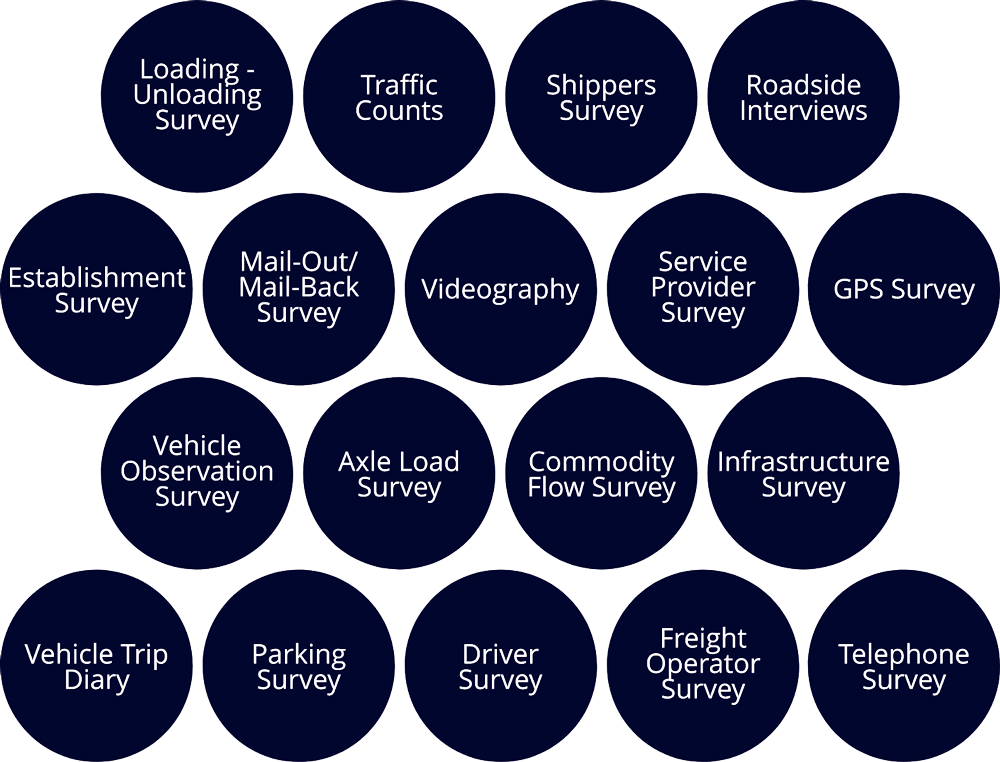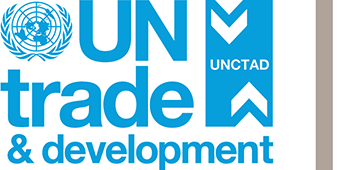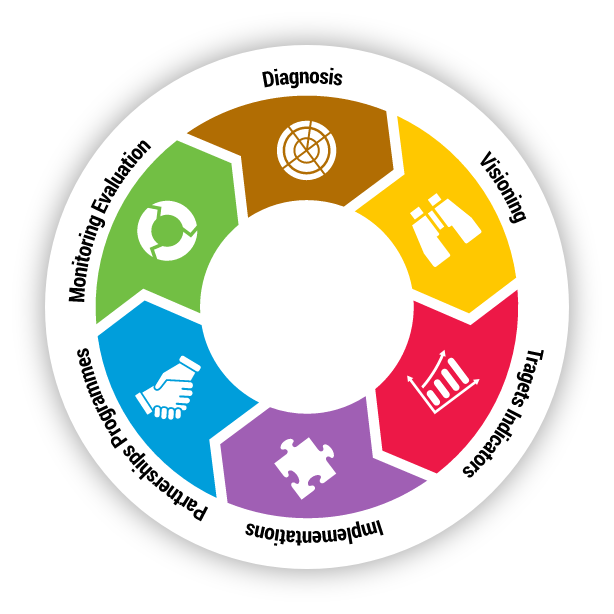The starting point under the UNCTAD SFT Framework is the Diagnosis step, which aims to identify “problems” in the freight transport sector that need to be addressed through a sustainable freight transport strategy. Before developing such a strategy, it is important to ascertain the existing state of play in terms of the performance of the freight transport sector, including in terms of its ability to meet relevant sustainability objectives. Work carried out at this stage will aim to identify the main challenges that undermine the sustainability of the freight transport sector and examine their underlying causes. This evaluation is carried out while bearing in mind the three pillars of sustainability and considering relevant existing policy and governance context. This process is heavily driven by data collection and analysis as well as stakeholders’ consultations and inputs.
The Diagnosis combines insights gained from qualitative and quantitative evaluations while taking into consideration available resources and local priorities. The Diagnosis aims to, inter alia:
- Define the problem.
- Gather evidence relating to the nature and scale of the problem.
- Extrapolate current trends and scenarios to formulate possible images of the future by merging quantitative and qualitative inputs.
- Identify sectors and stakeholders that are primarily affected by the externalities generated by the freight transport sector.
Data collection and quantitative assessment
To guide the data collection and analysis, the following key questions can be considered:
- How much cargo / freight is being moved?
- Where is cargo/freight going?
- What is the relative use of different transport modes?
- What is the quality of freight transport infrastructure?
- How efficiently is cargo/freight being transported?
- What is the external impact of the freight transport activity?
- Are the systems safe and compliant with relevant standards and regulations?
- How does freight transport performance compare to relevant benchmarks?
Quantitative approaches help assess the economic, social, and environmental impacts of freight transport by quantifying these impacts and converting them into monetary outcomes. In most cases, quantitative approaches require a significant amount of data and extensive analysis. Many survey instruments could be combined to collect comprehensive freight transport data (see illustration below). Surveys could involve in-person interviews, computer-aided telephone interviews, mail-out/mail-back surveys, and combinations of these deployment methods. In Tokyo for example, urban freight transport surveys are carried out periodically to help understand the importance of urban freight transport and to manage related externalities. The Tokyo Metropolitan Freight Survey has been conducted in 1972, 1982, 1994, 2003-2004 and 2013-2014. In 2013, 140,000 establishments were considered for the survey with a response rate of 32% with 43,600 respondents. Data such as parking, loading, unloading, and pedestrian flow per day were collected and 30 to 40 large companies were interviewed to understand current logistics practices, strategies adopted, and investments required.
Types of data collection surveys in the freight transport sector

Stakeholder mapping
Stakeholders’ interactions are rarely considered in the traditional “quantitative” models. Therefore, to carry out an effective diagnosis exercise in the context of limited data and resources, both qualitative and quantitative analyses may be required.
Before initiating a qualitative evaluation, stakeholder mapping is conducted to identify relevant players involved in freight transport activities. Stakeholders are defined as any actor having a stake in the decision-making process, either directly affecting or being affected by its resolution. These may include policy makers responsible for approving policies and overseeing their implementation, regulators responsible for maintaining environmental quality and regulating competition issues, infrastructure development authorities, as well as land-use and transport planners. Other stakeholders may include shippers, supply chain managers, transport and logistics service providers, associations within and outside the freight transport sector, financing institutions, technology providers (e.g. providers of vehicle and equipment technologies, fuels and intelligent transport systems), civil society, and the general public.
During the stakeholder mapping exercise, some of the critical aspects, which need to be considered, include the following:
- Agencies involved in relevant transportation policy, planning, and programming activities.
- Major shippers, carriers, and relevant associations and stakeholders whether freight transport users or service providers.
- Existing freight transport operations and performance.
- Cargo/freight flows, patterns, and direction.
- Type of freight transport-related data to use and whether accessible.
Qualitative assessment
The UNCTAD self-assessment questionnaire developed under the SFT Framework are an important tool that can improve respondents’ understanding of the existing state of play and establish whether economic, social, and environmental dimensions of freight transport are being taken into account. This instrument can also help ascertain ways in which sustainability considerations have been integrated into relevant processes.
The Quick Assessment evaluates the performance of the three pillars of sustainable freight transport and a set of performance indicators, before proposing a matrix of policy recommendations. The coverage can be the entire freight transport sector or only important transport modes or corridors. The overall process is divided into four phases to ensure a high-quality assessment based on sound data collection and a high engagement of critical stakeholders in the consultative process (Figure 6).
[1] This scoring scheme draws upon the Asian Development Bank’s STAR rating scheme.
Together, desktop research, quantitative and qualitative assessments, stakeholder interviews provide relevant and critical data and information required to perform a comprehensive diagnosis of the freight transport sector (see information box). By identifying the underlying gaps and needs, the Quick Assessment can also help determine the type of response measures and actions required to enhance the sustainability of the freight transport sector.
For example, if, following a diagnosis process, it has been established that the current level of ‘rail usage is low’, relevant stakeholders may decide to set targets, adopt policies and make investment decisions that help increase the share of rail transport (e.g. achieve a 50% freight mode share in 2030).

